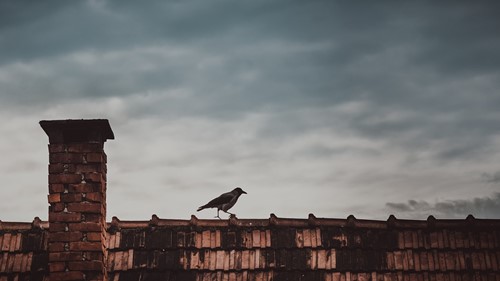
Homeowners sometimes visualize a chimney fire as an event that involves flames shooting out of the top like a flare. While that type certainly happens too often, slow-burning chimney fires tend to go undetected and place unsuspecting household members in harm's way. The good news for homeowners with fireplaces is reducing the risk of a chimney fire ranks among cost-friendly safety measures.
Carefully Consider What You Burn
The driving cause of chimney fires largely involves something called "creosote." This dark brown substance coats the inside of a chimney or flue and can ignite on a whim. Highly flammable and unpredictable, creosote buildup results from a wide range of elements.
These typically include vapor, smoke and even slivers of unburned wood. They cool and settle while moving upward from the fire through cooler areas of the chimney. Often, a natural accumulation point evolves. Once thick enough to reduce exhaust space, it can either turn into a smoldering burn or flash fire.
One of the best strategies to reduce creosote buildup involves using only select wood or specially manufactured logs. This generally means burning hardwoods that have dried and been seasoned for one year. Seasoned wood usually produces 20 percent less creosote. It's also essential to avoid softwoods such as pines with high sap content. Most manufactured logs identify what their specialty is on the packaging, so look for those designed to reduce buildup.
Add Chimney Fire Protections
Older homes typically have either a flue made from traditional fireclay or none at all. More modern homes sometimes have inserts, while new construction may enjoy insulated flue products. Having an adequate flue protects your household from a house fire by helping to contain the blaze. The safety measure involves preventing fires and sparks from permeating bricklayers and reaching surrounding structural timbers and other combustible materials.
If you own an old home without a flue system, you may want to have one installed promptly. Those with fireclay flues should be heavily inspected. This material can begin to degrade in 5-15 years, rendering it less than adequate.
The newer insulated flue products rank among the better options for two reasons. First, it keeps creosote off the brickwork. Second, the insulation is designed to even out heat distribution as smoke, vapor and wood fragments rise. This generally means that homeowners are less likely to sustain flammable buildup at a particular point. They're also relatively simple to install and replace as needed.
These rank among the best ways homeowners can reduce the risk of a chimney fire and keep their households safe. It's also essential to have a chimney cleaned and serviced regularly.
About the Author

Carolyn Ross
Carolyn Ross spent her career in the advertising world as a commercial photographer. She is no stranger to meeting challenging deadlines and working with many people in a fast paced environment.
She has shot for various magazines such as Architectural Digest, Boston Globe Magazine, Wellesley Weston, South Shore life as well Boston Magazine to name a few. Her love of homes and visual spaces has evolved through the years and has lead her to expand her career. She currently serves on the board of a national organization: The American Society of Media Photographers for the New England chapter. She has been involved in the school art programs as well as teaching photography classes.
Carolyn's expert knowledge of staging and art direction is what differentiates her from other agents. She has also taken her keen business background and artistic talents to successfully renovate numerous investment properties in the Metrowest area over the last several years.
This is what inspires her and with determination and passion, she will bring these unique skills to your next real estate transaction.
